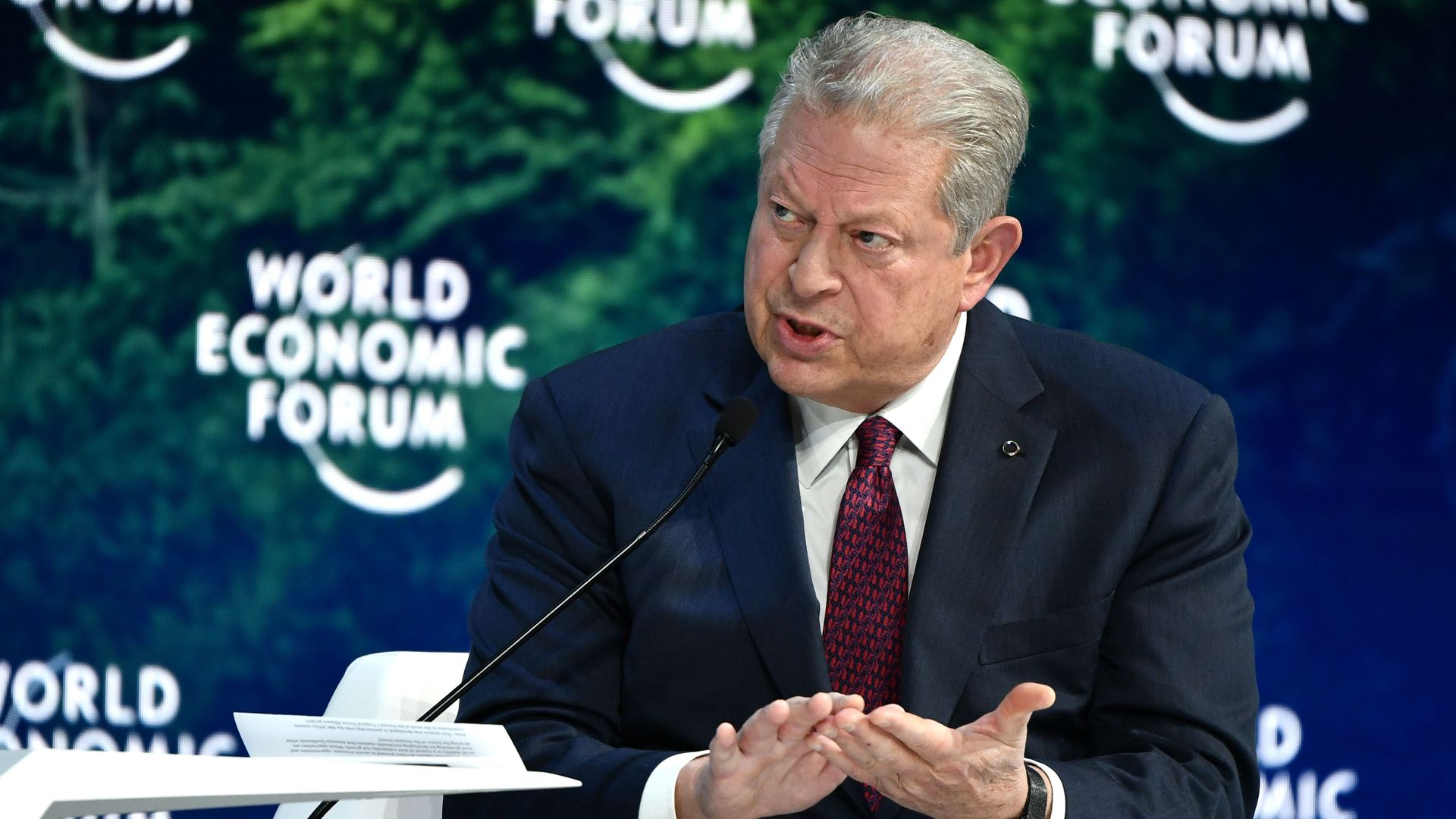With global temperatures rising and ice caps melting at an accelerated rate, it’s more important than ever to make the switch to sustainable energy. For businesses and major corporations, the move is not just important—it’s essential.
Climate leadership is about more than just words. It’s about taking control and affecting the kind of changes that should be taking place on a global level. Fortunately, it’s also a goal that’s well within your reach.
Contents

It's Time To Act
Since 1850, the global temperature has increased by about 1.1 degrees Celsius or just under 34 degrees Fahrenheit. That’s a significant change, but studies suggest that it will only get worse from here.
Even in the best-case scenario—one in which all the planet’s inhabitants strive to reduce global emissions to net-zero—the Earth’s temperature will still go up 1.5 degrees Celsius by the year 2050. The fallout from this would be catastrophic, as sea levels rise and severe weather patterns become the norm.
If humans continue to ignore the crisis, the situation will still be direr. Some of the most populated areas will no longer be habitable, and global food shortages will abound. Many islands and coastal towns could be completely submerged by the year 2100.
Is the situation hopeless, then? Not by a long shot. Experts have posited that to limit the damage to the best-case scenario outlined above, net human carbon dioxide emissions must be reduced to 45 percent by 2030 and virtually eradicated by 2050. These aren’t impossible goals—but the clock is ticking quickly.
How Leaders Play a Role in Climate Change
In order to effect change, every last person needs to contribute to the effort. While it’s helpful to recycle plastics and walk to work instead of driving, there’s only so much an individual can do to keep things moving. That’s where leaders come in.
If every industry leader were to step up and take action, the positive effects of these changes would multiply. By way of example, consider what a difference it would make if an office that employed dozens of people were to go paperless. Or if a company with hundreds of traveling employees switched from domestic flights to train travel.
These are outsized examples, and not feasible for every business. But only the leaders can make the decisions that will set the wheels in motion.
When planning your strategy, focus on these four key points:
- Reduce primary emissions-Switch to virtual meetings and encourage hybrid-remote work strategies
- Reduce “value chain” emissions-Keep an eye on the strategies of your suppliers, and attempt to collaborate with those who share your vision
- Change your business strategy-Update the company’s mission statement so that it reflects your commitment to the health of the planet
- Network-Use your influence as an industry leader to effect change in the community as a whole
Examples of Leaders Who Take Responsibility
What does it take to be a climate leader?
Contrary to what you may believe, he doesn’t need to be a world leader, or even the CEO of a major corporation. Climate leadership is about taking real action–and motivating others to do the same.
Here are a few examples of climate change leaders who have demonstrated their ability to influence others.
Greta Thunberg
Swedish activist Thunberg has been making waves since the age of 15, when she began cutting school to stand outside the Parliament building with signs that could be translated to read “School Strike For Climate.” Less than a year later, in March 2019, the then-16-year-old received her first nomination for the Nobel Peace Prize–a feat that was repeated in 2020 and 2021.

Joe Biden
Early in his tenure as the 46th President of the United States, Biden vowed to take action that would slice the nation’s carbon emissions in half by the year 2030. The administration has since made a few great strides forward by introducing trillion-dollar-plus bills that would clean up power plants and provide additional support to public works that combat climate change.

Larry Fink
As CEO of BlackRock, a New York-based investment management corporation, Fink has beseeched other business leaders to aid him in his efforts to eradicate greenhouse gas emissions by 2050. In 2020, when Fink drafted his annual letter to CEOs, he asked them to provide specific plans illustrating how they would align their business strategies with a net-zero economy.

Al Gore
Many people have seen (or at least heard of) Al Gore’s 2006 documentary, An Inconvenient Truth. But the former Vice President isn’t content to let his message languish on celluloid. Today, he’s the founder and chairman of the Climate Reality Project, as well as the cofounder of Generation Investment Management. The Climate Reality Project is a nonprofit, dedicated to combating climate change by raising awareness and providing planet-friendly solutions.

Sundar Pichai
In late 2019, Pichai became the CEO of Alphabet, which just happens to be the parent company of Google. Alphabet is well-known for its use of renewable energy. In fact, the company has procured 3 gigawatts of solar and wind capacity in order to sustain its considerable energy consumption.

Time For a Revolution: What You Can Do
No matter how much time is left, no matter which goal you choose to focus on, one fact remains: the time to act is now.
The question is, how can you use your influence to combat climate change and effect positive change for the environment?
Even if you’re starting from scratch, there are numerous options available to you. Let’s take a closer look at a few of them.
Cutting Corners
First and foremost, you should make a list of all the ways your company uses energy. The following examples are common:
- Heating
- Air-conditioning
- Waste management and removal
- Traveling, including commuting
From there, think about the changes you could make to reduce your carbon footprint. Let’s break it down:
Heating
If you haven’t already switched to solar power, consider doing so now.
Depending on your budget and the size of your facility, you could also switch to geothermal heating. This method draws heat from the earth itself, and is considered the most environmentally sound method available.
Air-Conditioning
This is one of the stickiest wickets when it comes to energy conservation. The best thing you can do is upgrade your systems, since modern AC units are up to 50 percent more efficient than models from the 1970s. Look for the most sustainable and energy-efficient units available, and try to limit their use to the warmest months of the year.
Waste Management
Eco-friendly waste management is a must. Set up recycling bins in prominent areas, making sure to label them clearly. It’s inevitable that people will sometimes put glass in the plastic bins and vice versa, but these issues can be sorted out later.
You might also consider composting and donating the results to a local public garden. Use tightly lidded containers to dispose of materials that are nitrogen-rich (such as leafy greens) and carbon-rich (eggshells or coffee grounds). When the containers are full, give them a week to cool down before mixing and shredding the compost.
Traveling
As we pointed out earlier, traveling workers should be encouraged to utilize the rail system instead of flying. You can also adopt a hybrid remote work model that allows certain employees to work from home one or two days a week.
If your business is based on manufacturing or another industry that doesn’t allow for much telecommuting, offer special perks to employees who are willing to carpool or use the public transportation system. For example, the company could pay for a percentage of the employee’s annual bus or subway fare.
Check Your Suppliers
This step is related to one of the key points listed above: the importance of reducing value chain emissions. It doesn’t matter how hard you work to create a planet-friendly work environment if you’re giving business to suppliers who refuse to do the same.
Check in with all of your regular vendors and suppliers. How are they doing business? Are they similarly focused on the vision of a net zero economy?
If the answer is no, then it’s time to seek out different vendors. Once these businesses understand that you’re willing to put your money where your mouth is, they’ll be more likely to take notice. Perhaps some will even be convinced to follow your example.
What You're Selling
Turn your attention to the products and services you offer. Do they include any environmental savings aspects? If not, is it possible to modify them so that they’re as energy-efficient as possible?
Spread the word among your C-level executives, middle management, and first-rung workers: The company’s focus is shifting to a planet-friendly business model. With that, they should be encouraged to follow suit.
Related posts
Tips and Resources: Gathering Information
Know that if you take these steps, you won’t be alone. There are many organizations and alliances that are committed to preserving the planet. Whether your company is small or large, there are many resources available to you.
Leaders For Climate Action
The LFCA website is teeming with pertinent information. If you want to learn more about carbon reduction, they’ve got you covered. If you want to take things further by becoming an activist within your community as well as your business, they can help you get started there as well.
Climate Leadership Initiative
CLI is a global network, working to connect climate experts with philanthropists who have the means to effect real change.
Climate Leadership Council
This is an excellent resource if you’re looking for news on the latest climate leaders, innovative technologies, or other subjects that relate to the current crisis.
Climate Science & Policy Watch
Climate Science Watch was founded in 2005 by whistleblower Rick Piltz, and to this day, the organization seeks to hold the government accountable for environmental wrongdoing. It also focuses on the public policy issues that have arisen as a result of climate change.
CleanTechnica
Anyone who’s hoping to join the ranks of the world’s climate leaders would do well to check this website on a regular basis. In addition to exploring the latest clean technologies, they frequently publish articles that address the toll of climate change. They’re also committed to debunking common misconceptions about sustainable living in general.
Save The Planet While Boosting Revenue
Prolonging the health of the planet is important for our children and their children. That much goes without saying. But did you know it could also be instrumental in boosting your company’s bottom line?
It’s true. Fostering a climate-neutral environment could help you grow revenue, even as you work to create a better future for the coming generations.
Here are some of the perks you can expect to enjoy as a climate leader:
- It will attract potential employees and executives who are seeking careers in a climate-neutral organization
- Environmentally conscious buyers will be more likely to do business with you
- You’ll attract attention from other climate change leaders, who might be interested in forming an alliance with your company
In Conclusion
No one ever said that climate change leadership was an easy path. But it is the right one to take—for your company, your community, and your future.
You might like also these posts:
